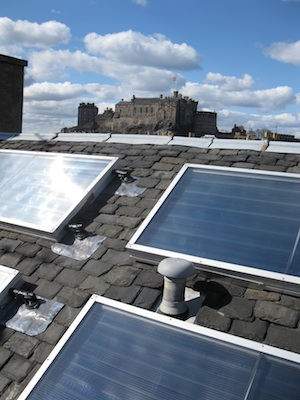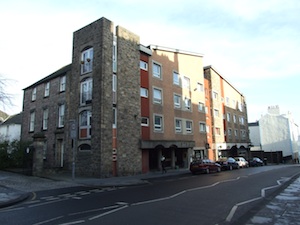Photo Gallery
Edinburgh has been the Scottish capital since the 15th century. Its World Heritage Site comprises of two distinct areas: the Old Town, dominated by a medieval fortress; and the neoclassical New Town, whose development from the 18th century onwards had a far-reaching influence on European urban planning. The harmonious juxtaposition of these two contrasting historic areas, each with many important buildings, is what gives the city its unique character. The Old and New Towns of Edinburgh were inscribed in the World Heritage list in 1995.
Edinburgh has become a worldwide reference in demonstrating that energy transition towards sustainable models in historic cities is possible. Edimburgo Patrimonio (EWH), Photo Gallery, has deployed a wide array of initiatives and projects that define a way towards energy sustainability.
Energia Heritage & Heritage Rinnovabili
The Old and New Towns of Edinburgh World Heritage Site boast an outstanding variety of buildings with different architectural styles, materiali e personaggi unici. Questi edifici tradizionali hanno già alcuni benefici in termini di sostenibilità ambientale, tra cui la loro longevità, massa termica, materiali di provenienza locale e ventilazione naturale. Contrariamente alla credenza popolare, it is possible to reduce energy inefficiency in traditional buildings, senza compromettere la loro autenticità.
Building conservation and energy efficiency are both key aspects of sustainability for Edinburgh World Heritage (EWH). Traditionally-built properties were built to last: many have been standing for hundreds of years, and well-maintained properties will continue to stand for many more. In order for them to continue to be comfortable in the future – without putting occupants at risk of fuel poverty – EWH promotes a range of viable interventions than can be adopted to improve their energy efficiency.
In partnership with Edinburgh-based Changeworks, EWH promoted the Energy Heritage project, providing a guide to improving energy efficiency in traditional and historic homes, covering all aspects of construction.
As a complement, the Renewable Heritage project sought to introduce clean energy technologies into traditionally-built, protected properties in Edinburgh’s Old Town, una zona protetta e parte del patrimonio mondiale dell'UNESCO. This work built on the success of Energy Heritage project, che è stato in seguito a livello nazionale e riconosciuto a livello internazionale come esempio di best practice. Heritage rinnovabili ha dimostrato che la sostenibilità e l'efficienza di energia in case storiche possono essere promossi da un uso sensibile e appropriato dei sistemi di generazione di energia pulita.
Gilmour’s Close project
Gilmour’s Close is a 4 storey, 19th Century stone tenement, with commercial ground floor, located in the World Heritage site of Edinburgh’s Grassmarket. Photo Gallery 2008 to provide social rented and supported housing for Hillcrest Housing Association.
The refurbishment process sought not only to conserve the historic aspects of this listed structure, but also to incorporate low energy principles to the design in the form of ground source heating, passive solar strategies, mechanical ventilation with heat recovery (MVHR) and upgrade of the fabric’s thermal performance by internal lining.
Lessons learned and replicability
The idea of developing sustainable energy projects in heritage cities has been taboo for a long time, and in many cases it has been considered incompatible with their conservation.
Edinburgh’s experience shows that good levels of energy efficiency could protect the sustainability of traditional homes (Photo Gallery), and ensure that householders achieve affordable warmth and improved comfort levels. It has also demonstrated that clean renewable energy can also be generated on site and on a much smaller scale, without compromising the quality and authenticity of the heritage. With the appropriate knowledge and good governance, microgeneration has a future role to play in historic cities.
Edinburgh can be a powerful performance reference for the 252 cities that host properties included in the World Heritage List, and for the thousands of historic cities and villages within the World Network of Biosphere Reserves. Infatti, ci sono poche esperienze di energia sostenibile nelle città storiche di tutto il mondo.


















